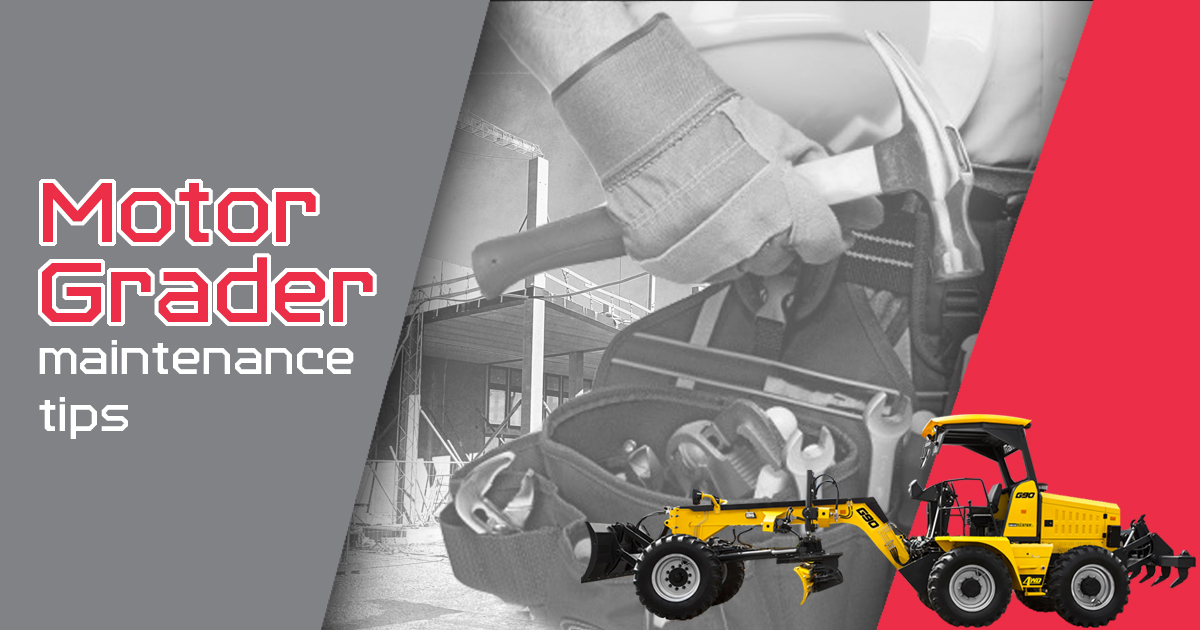Maintaining Tight Motor Grader Circles to Get Accurate Grades Fast

Motor graders are a complex equipment as against any other heavy equipment. This is because they are different from the others in terms of setting the controls such as the angle and height of the blade which requires certain skills, especially when setting them to obtain fine degree of result. Thus, in order to get the accurate grades fast, an experienced operator needs to take into account various factors.
In order to understand in detail about how to get accurate grades fast, the below mentioned tips should be followed...
1. The importance of maintaining tolerance:
a) It is better to keep the components tighter for faster grade accuracy. Tightness in the moldboard slides, circle supports, drawbar ball stud and even the operator’s seat are all important factors to consider when determining if the grader can produce a finish grade to the tolerance specified. For that, the critical areas of the circle and moldboard slide should be inspected frequently, if not daily.
b) There are chances of wear and loss of blading tolerance wherever there is a sliding surface. Hence, the circle support shoes, moldboard slides and connection between the lift and sideshift cylinders and the drawbar should always be considered by the experienced operator.
c) It is generally seen that when the clamp and guide shoes in the circle turn system are worn or out of adjustment, it can restrict the circle’s rotation, thereby not allowing quick and accurate adjustments while grading. Hence, care must be taken.
d) Close attention should also be paid to the trunnions which hold the blade shift cylinder and receive the majority of the shock loads during grading. If the grader develops excessive wear in the trunnions, then the ability to hold tighter tolerances is lost.
e) Further, even out-of-tolerance components can create excessive wear. If the circle and slide is not maintained within 1/16 to 3/16 in., the result is premature wear. Hence, close attention should be paid towards this.
2. Cutting edge monitoring:
The cutting edge of the motor grader is highly affected by the type of material the equipment is working with. For example, very rough material can cause wear to the cutting edge in a very short span of time like an eight-hour shift and soft material can help the cutting edge to last for a month. Hence, the cutting edge should be checked frequently. Since critical tasks are performed by the cutting edge, a worn blade can make it nearly impossible to achieve a close tolerance grade. This can result in more time needed to complete the task which in turn can affect the operating cost. Hence, the cutting edge should be maintained properly and changed if needed as the cost of re-grading the surface to compensate for the worn edge may be much more.
There are a couple of indicators that can alert the operator about when the cutting edge should be replaced. Two main indicators include when the cutting edge wears to be even with the moldboard and when the uneven wear across the width of the cutting edge can be visually seen. Typically, all the edges should be changed across the length of the moldboard at one time, otherwise, it might not give the required finish grade. Also, the mating faces of the edge and moldboard should be free of any dirt and grit. Here, it is to be noted that the quality of blade when replacing the cutting edge can also make a difference and here the operator experience comes into picture who knows what is best for the equipment keeping in mind the operating conditions.
3. The need for maintaining the components:
If the motor grader is not maintained properly, the ability to get accurate grades fast will definitely suffer. So, here are some maintenance tips:
a) The turntable and moldboard slide tolerances should be maintained as close as possible as if the wear reaches or exceeds the tolerances, then it might not be possible to achieve accurate grades fast. Hence, regular maintenance of critical moving parts is the key to help prevent excessive wear. This requires vigilant record keeping of the service intervals. The service intervals for all parts as recommended by the manufacturer should be followed.
b) There are various wear areas in the motor grader that require constant attention. The most common wear points include the cutting edge, blade slide guides, circle guide shoes on the turntable and blade lift cylinder connections. As these components wear, more play is introduced into the system. Hence, they need to be regularly checked for excessive play which is the enemy of accuracy and productivity and make the system loose. It is better to inspect the equipment every day before use.
c) All the wear items ranging from the ball stud to the drawbar, along with the clamp and guide shoes and cutting edges that are critical for the motor grader’s daily performance should always be stocked.
d) All the moving parts of the equipment should be properly greased.
Thus, by following the above mentioned tips, accurate grades can be reached much faster.
In a nutshell
Overall, the tighter the system, the faster the grade can be achieved. Hence, all what is needed is maintaining tolerance, cutting edge and various other important components of the motor grader that have a maximum impact on the grading performance.









